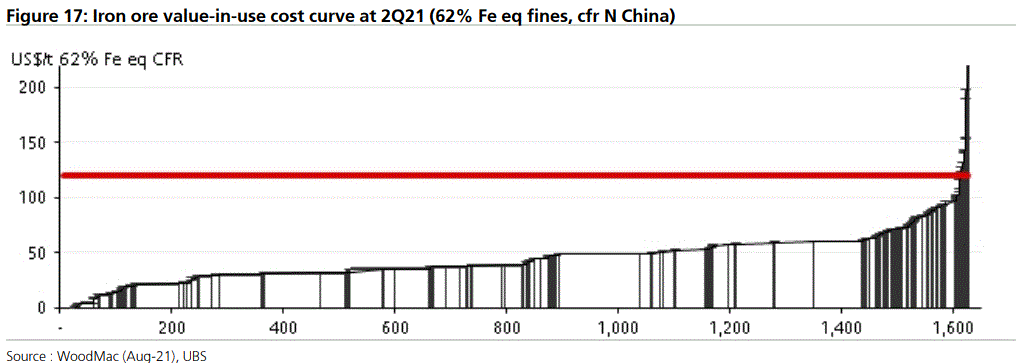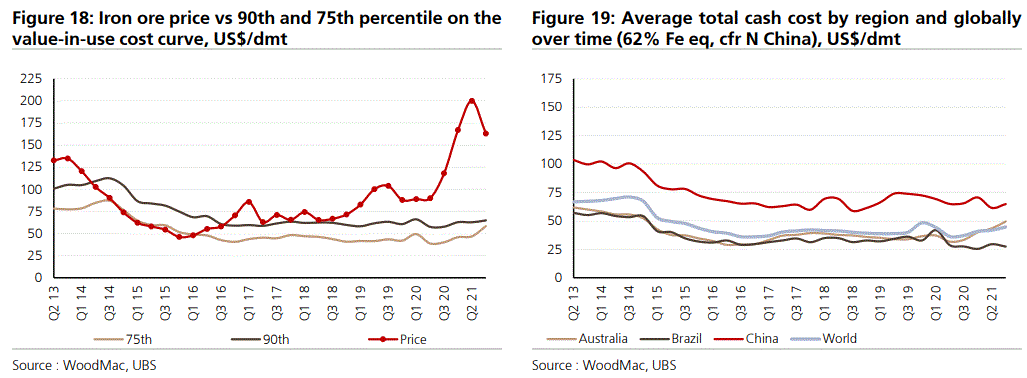The ferrous complex remained under intense pressure on September 17, 2021 with both spot and paper getting flogged again:

There was no movement in Dalain overnight because it is closed for holidays until Wednesday. A circuit breaker if ever there was one needed.
My $100 target reached! Where to next? UBS has more:
Iron ore to fall below $100/t by year end
Iron ore and met-coal prices have been volatile over the last 3 months; weaker steel production in China has driven a sharp fall in iron ore prices (-45% since end-June) while supply disruption and the continued embargo of Australian coal into China has driven a sharp increase in met-coal prices (+150% since mid-May). We cut our iron ore price forecasts for 2021-23 by ~10% as we now expect the market to be in surplus from 2H21; we expect the price to fall below $100/t by the end of 2021 and average $89/t in 2022 (vs consensus of ~$132/t). We lift our met-coal price forecasts by >30% in 2021/22 to $190/t following the sharp lift in spot; we still expect prices to normalise back to ~$150/t by 2023 as steel demand slows and supply adjusts.
Iron ore: material cut to China steel production driven by weak property market
Our China property team recently downgraded starts to -9% in 2021 and -7% in 2022 with the market slowing sharply from July when tightening measures started to impact sales (note). As a result, our China Materials team has cut China steel demand & production by ~5% in 2021-23, expecting a material slowdown in 2H; we expect China steel production to plateau in 2022/23 at ~1.07Bt. We update our iron ore model for the new pig iron ore production and iron ore supply forecasts; we now expect the seaborne market to be in surplus from 2H21 (previously a small deficit in 2021); we expect this to result in a build in inventories and a faster normalisation in prices back to the 90th percentile on the cost curve (currently ~US$65/t).
Where do iron ore prices end up?
As illustrated below, iron ore prices tracked the 90th percentile of the value-in-use (VIU) curve in 2016-2018 when the market was in surplus (before the Brumadinho tragedy in Jan-19). Before this (in 2014-2015), when the market was concerned about China credit & a potential hard-landing, the iron ore price tracked the 75th percentile on the VIU curve. WoodMac’s 2Q21 iron ore value-in-use curve shows the 90th percentile is broadly flat q/q at $63/t; it is however still materially lower than the 2014 average of $107/t (note).


Yep. The only point to add is that as the price falls, so will the average breakeven cost, so we may have to go even lower in the short term.

